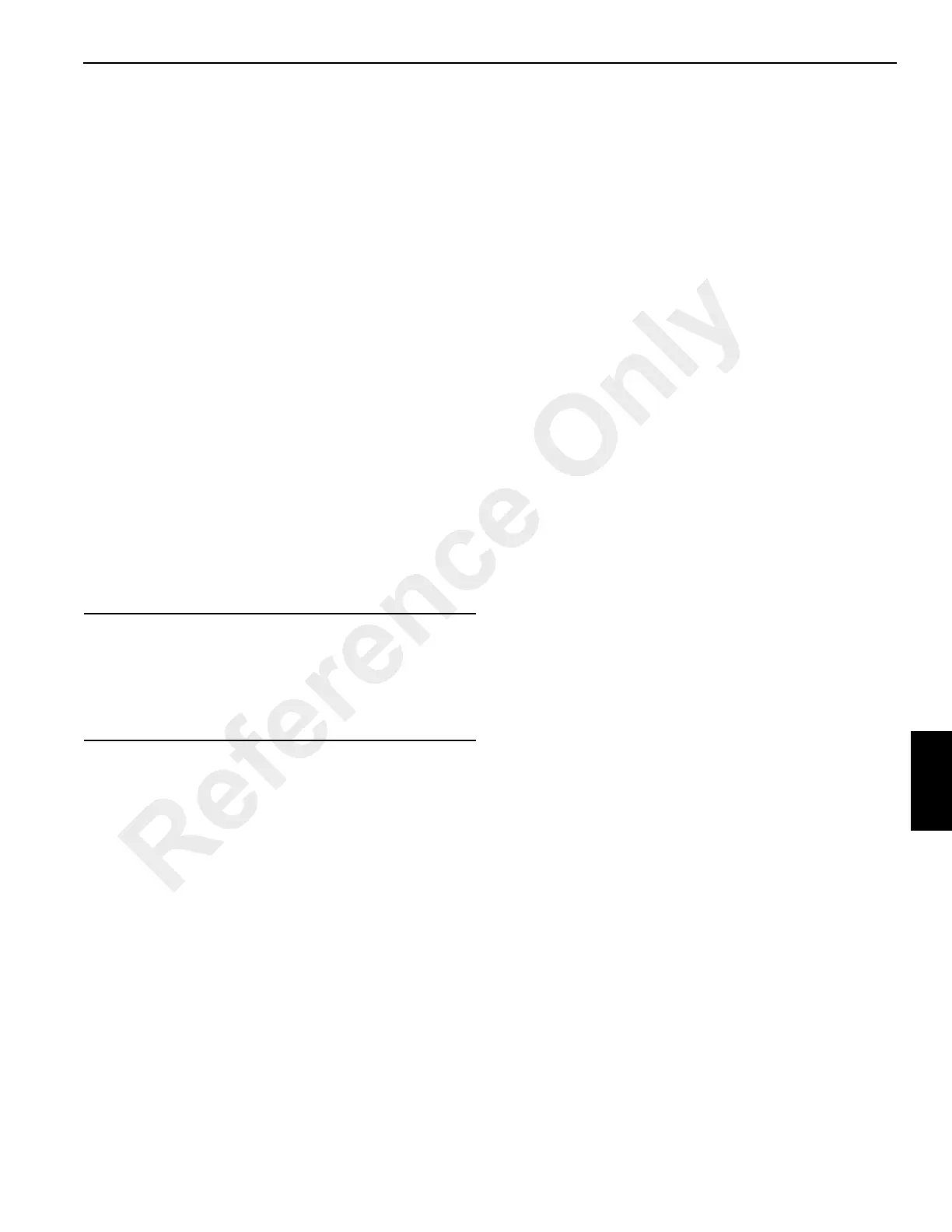Published 4-20-2015, Control # 502-01 7-21
RT540E SERVICE MANUAL POWER TRAIN
DRIVE TRAIN
Description
The drive train consists of the transmission/torque converter
assembly and three drive lines.
The transmission/torque converter is mounted to and driven
by the engine. The torque converter assembly provides for
mounting and driving the pumps. The transmission is a
powershift with six forward speeds and six reverse speeds.
The transmission is controlled electrically by a shift lever/
knob located on the right side of the steering column and an
axle drive mode selector rocker switch located on the left
side of the front console.
The transmission/torque converter oil is cooled by passing
the oil through an externally mounted transmission cooler.
The cooler is part of the radiator. An oil filter is located on the
left side of the frame bottom rail.
Three drive lines are used. Two drive lines are connected
between the transmission and the front axle and the other
drive line is connected between the transmission/torque
converter and the rear axle.
Maintenance
Drive Lines
Removal
1. Support the drive line being removed so it does not fall
when disconnected.
2. Remove the bolts from the bearing cap on each end of
the drive line.
3. Remove the drive line.
Installation
1. Position the drive line, install the bearing cap bolts and
tighten bolts securely.
2. Torque the inboard bearing cap bolts on the drive line to
95 to 108 Nm (70 to 80 lb-ft) and outboard bearing caps
to 127 to 142 Nm (94 to 105 lb-ft).
Lubrication
The drive line slip joints require lubrication. Refer to Section
9 - Lubrication.
Transmission/Torque Converter
Description
The transmission/torque converter assembly is mounted to
the engine and is connected to the front and rear axles by
two drive shafts. The main hydraulic pump is mounted on the
torque converter housing.
Theory of Operation
The transmission and torque converter function together and
operate through a common hydraulic system. Therefore, it is
necessary to consider both units in discussing operation.
With the engine running, the converter charging pump draws
oil from the transmission sump through the removable oil
suction screen and directs it through the pressure regulating
valve and oil filter.
The pressure regulating valve maintains pressure to the
transmission control for actuating the direction and speed
clutches. This requires a small portion of the total volume of
oil used in this system. The remaining volume of oil is
directed through the torque converter circuit to the oil cooler
and returns to the transmission for positive lubrication. This
regulator valve consists of a hardened valve spool operating
in a closely fitted bore. The valve spool is spring loaded to
hold the valve in a closed position. When a specific pressure
is achieved, the valve spool works against the spring until a
port is exposed along the side of the bore. This sequence of
events provides the proper system pressure.
After entering the converter housing, the oil is directed
through the reaction member support to the converter blade
cavity and exits in the passage between the turbine shaft and
reaction member support. The oil then flows out of the
converter to the oil cooler. After leaving the cooler, the oil is
directed to a fitting on the transmission. Then, through a
series of tubes and passages, lubricates the transmission
bearings and clutches. The oil then gravity drains to the
transmission sump.
The torque converter consists basically of three elements
and their related parts to multiply engine torque. The engine
power is transmitted from the engine flywheel to the impeller
element through the impeller cover. This element is the
pump portion of the hydraulic torque converter and is the
primary component which starts the oil flowing to the other
components which results in torque multiplication. This
element can be compared to a centrifugal pump, in that it
picks up fluid at its center and discharges at its outer
diameter.
The torque converter turbine is mounted opposite the
impeller and is connected to the output shaft of the torque
converter. This element receives fluid at its outer diameter
and discharges at its center. Fluid directed by the impeller
out into the particular design of blading in the turbine and
CAUTION
Do not disassemble drive lines when removing them from
the crane. Dirt can enter the spline and cannot be purged.
In addition, the drive lines are assembled in a specific
orientation when manufactured and can easily be
incorrectly reassembled.
Reference Only

